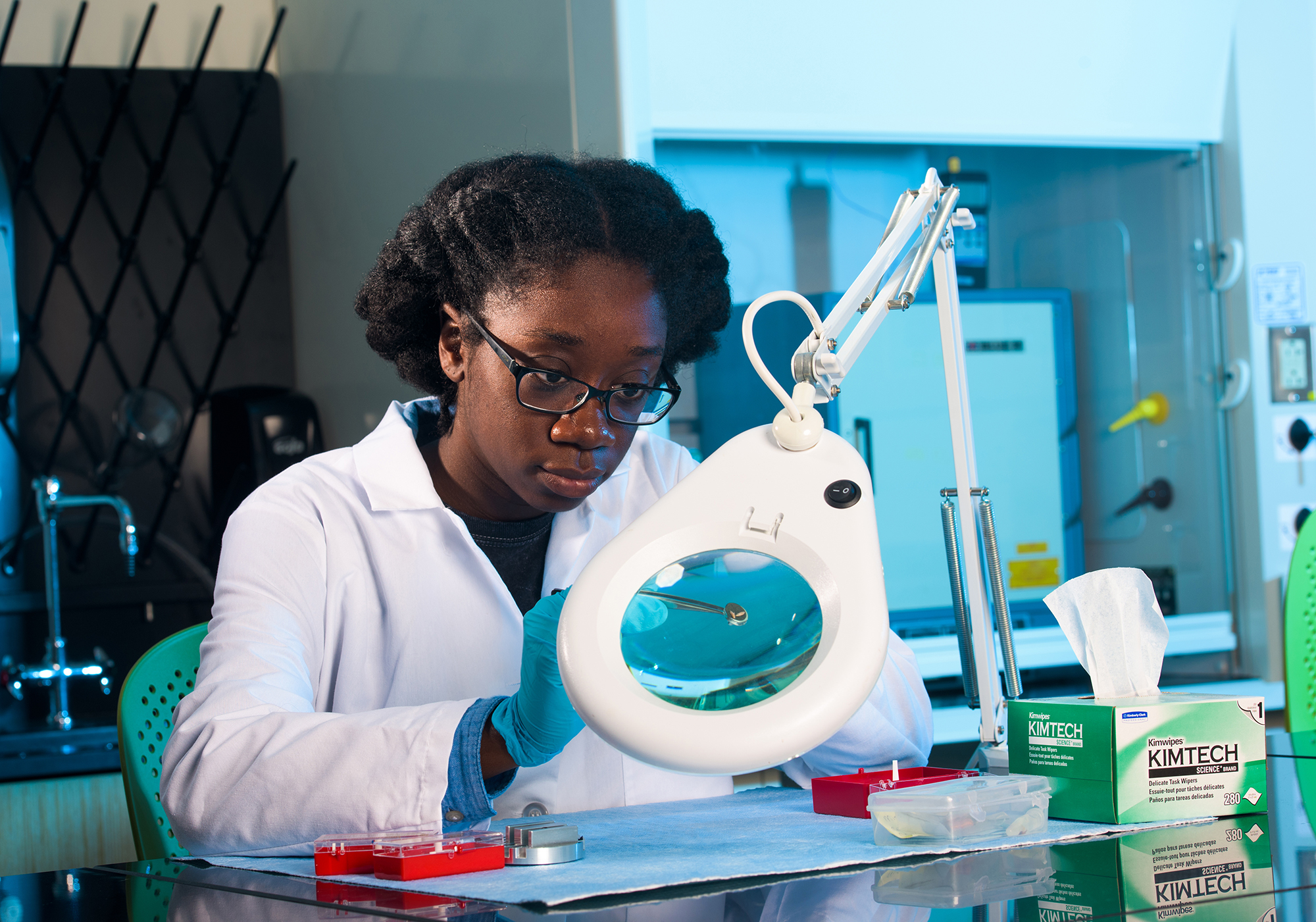If you are not familiar with a nanometer, it might be hard to imagine just how small it is (for reference: there are 25,400,000 nanometers in an inch, and a fingernail grows 1 nm per second). It might be harder still to imagine just how important it is. Yet nanoscience — the science of the very small — has grown increasingly crucial, so much so that scientists are finding that as nanotechnology evolves, it impacts all sectors of science, such as medicine, pharmaceuticals, the environment, energy production, agriculture, and more. And the CSCU Center for Nanotechnology (CSCU-CNT) at Southern Connecticut State University is a key player in this evolution.
The CSCU-CNT exists, in part, thanks to a task force put together by former Connecticut Governor M. Jodi Rell, the State Legislature, and the Connecticut Office for Workforce Competitiveness. Each supported nanotechnology research as a means to keep Connecticut competitive in the nanotechnology revolution. Dr. Christine Broadbridge, director of the CNT and professor of physics, served on the task force; she, alongside fellow industry experts, spent significant time with state representatives discussing how the growth of the technology could be supported statewide.
“The force’s findings were published in 2005 in a report prepared for the state legislature by Battelle Technology Partnership Practice,” Broadbridge said. “Essentially, the findings said a statewide nanotechnology center needed to be created.”
But where? In addition to a physical space, the report noted the need for educational materials and programs, at multiple levels, to train a skilled nanotechnology workforce. There also needed to be collaboration between public and private interests, as well as the capability to perform nano-scale materials research.
Physics faculty at Southern quickly realized that Southern was the ideal location.
“We had the funding, the strength, the passion, and the students,” Broadbridge said.
Southern also had the collaboration. Through Broadbridge’s leadership, Southern’s Physics Department had developed strong ties with Yale, UCONN, the Connecticut Community Colleges, other regional universities, and local industry. Under Broadbridges’ lead the CNT would support, with federal grant funds, the establishment of three CNT regional-hubs at Central, Eastern, and Western Connecticut State Universities. Faculty, dedicated to scientific research and teaching, would help develop new knowledge while disseminating that knowledge to Southern’s diverse student population.
It was a win-win.
Now, 13 years later, the CNT sits as the foundation of Southern’s 103,608-square-foot, four-level academic and laboratory science building. Focused on world-class nanotechnology research and related student opportunities for experiential learning, the CNT helped to motivate the building. The center has stayed true to its mission of collaboration: equipment aligns with local faculty expertise and complements, rather than competes with, facilities available at UCONN and Yale. Regional companies such as Proton Onsite, Nomad Metallurgy and KX Technologies pay membership fees to use CNT research facilities; they also hire students trained in CNT facilities.
“We’re providing cutting edge science and technology to students,” Broadbridge said. “We’re also providing access. Small businesses get access to technology and students get hands-on experience.”
The center also is the primary resource for SCSU’s Werth Industry Academic Fellowship Program, the CSCU Nanotechnology Graduate Certificate, and the Professional Science Master’s in Applied Physics, the only such degree in New England.
But back to the evolution.
“Nanotechnology has changed,” Broadbridge said. “The focus used to be in electronics, but there is new, more advanced instrumentation. Nanotechnology is the manipulation of matter at a very fine level, resulting in beneficial technologies. Those new technologies benefit all sectors of science, including, as examples, environmental sustainability, renewable energy, life and health science. The CNT has expanded its focus and resources to support these important areas.”
For example, through the BioScience Academic and Career Pathway Initiative (BioPath), a partnership between the City of New Haven and Southern to support the growing biotechnology sector of the economy, the CNT has placed interns at, among other companies, Arvinas, a biopharmaceutical company focused on developing therapeutics for cancers and other difficult-to-treat diseases. Via on-going industry-academic partnerships, a growing internship program and faculty/student research the CNT continues to make significant progress in better understanding nano-scale phenomena in materials.
Nanoscience may be the science of the very small, but the Center for Nanotechnology at Southern is affecting students, faculty, businesses, the economy, and the world’s scientific fields in big ways.


